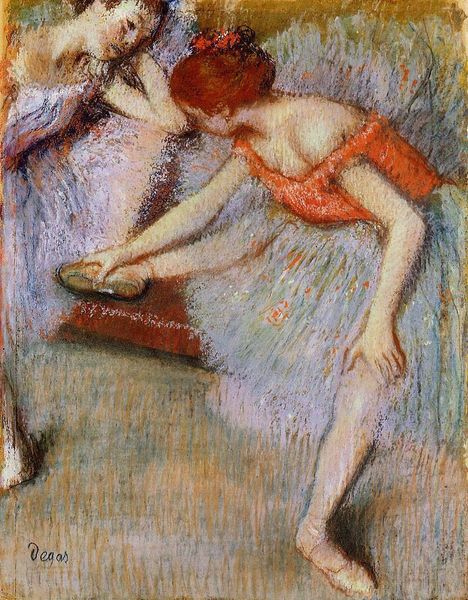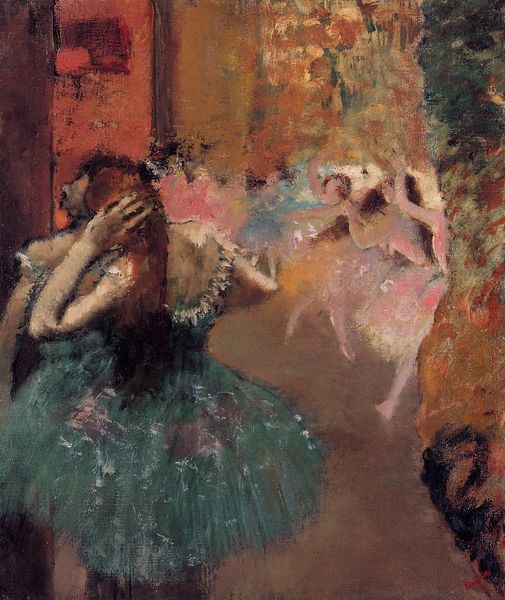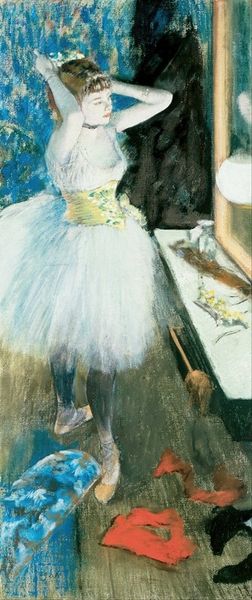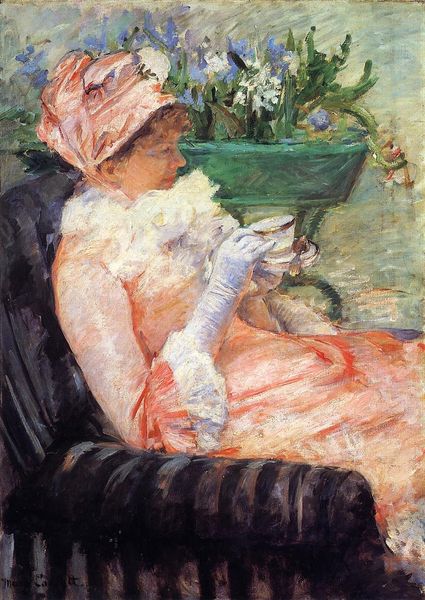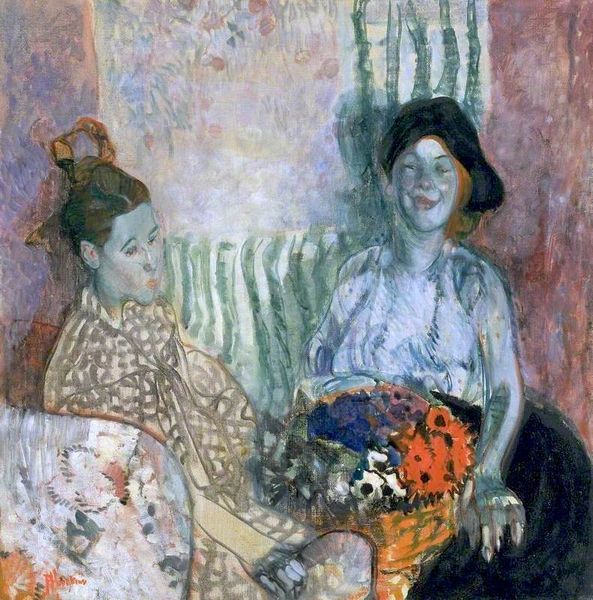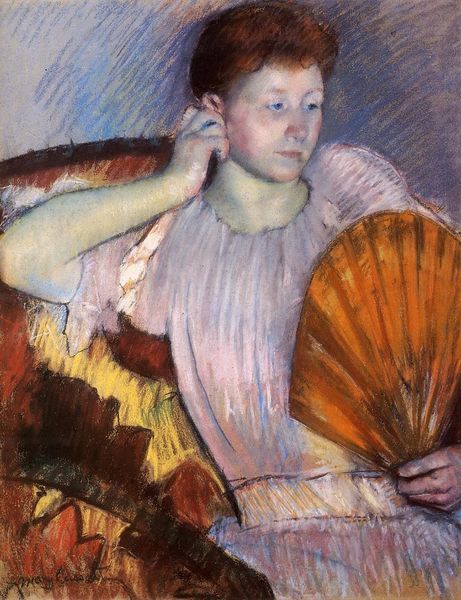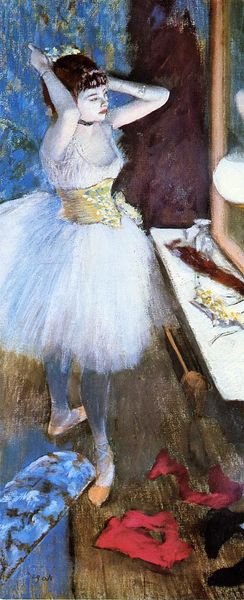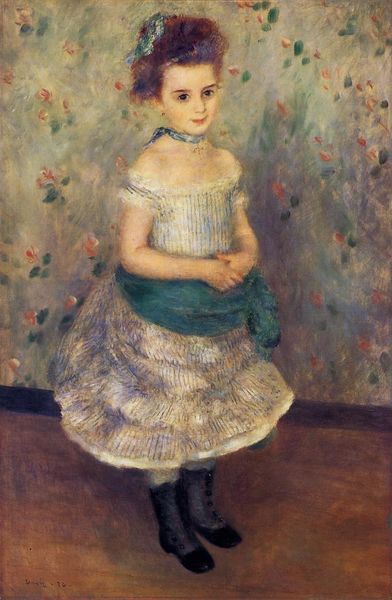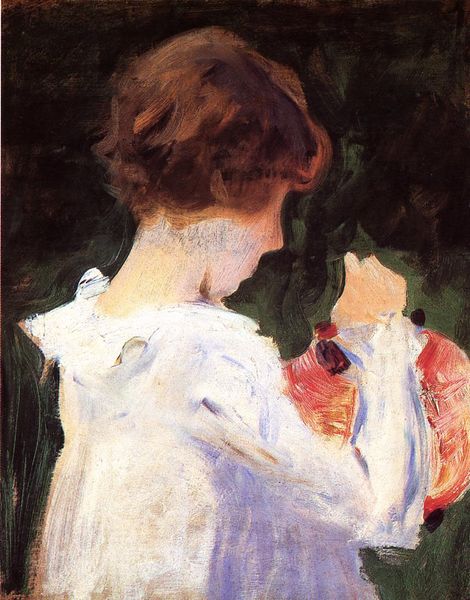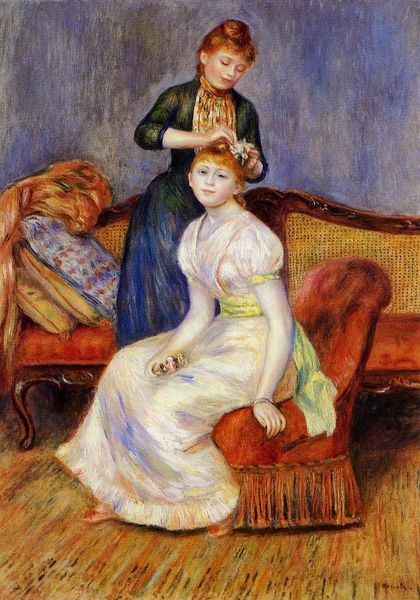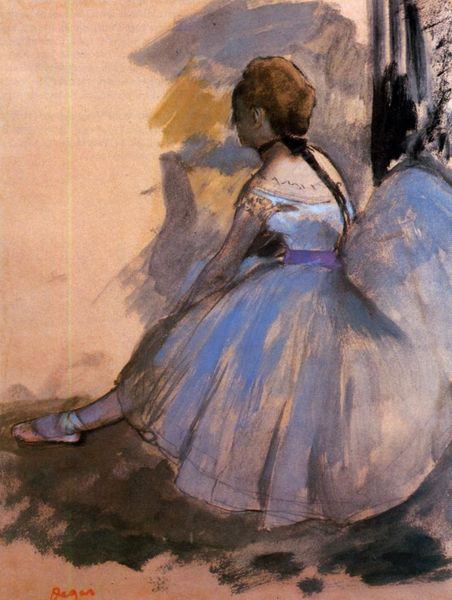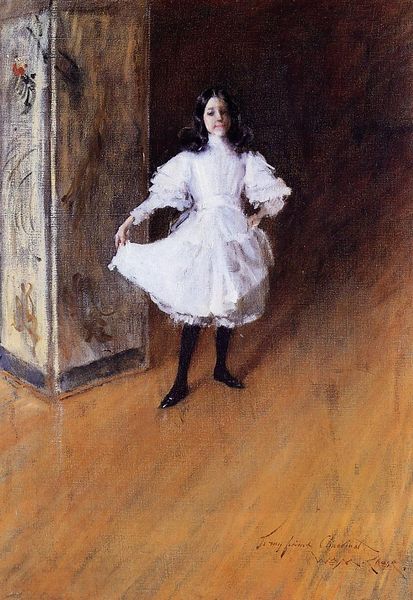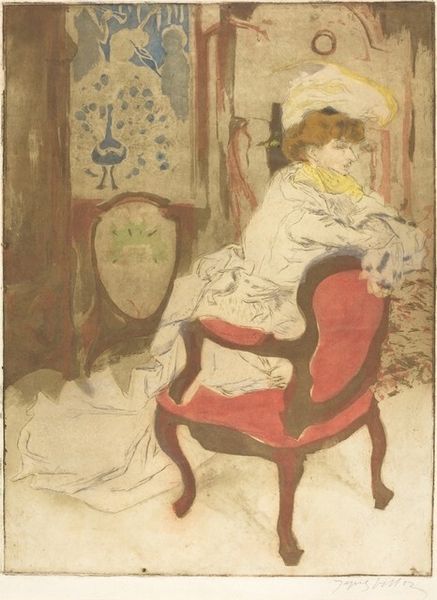
Dancer in Her Dressing Room 1880
0:00
0:00
edgardegas
Oskar Reinhart Foundation, Winterthur, Switzerland
drawing, pastel
#
portrait
#
drawing
#
impressionism
#
figuration
#
oil painting
#
france
#
painterly
#
genre-painting
#
pastel
#
modernism
Copyright: Public domain
Curator: Welcome. We’re standing before Edgar Degas' pastel drawing from 1880, titled "Dancer in Her Dressing Room," now residing at the Oskar Reinhart Foundation in Winterthur. Editor: First impression? Slightly melancholic. She’s caught between the performance and her private self. A little bit… exhausted, maybe? Curator: Precisely. Note Degas’ choice to frame her on the threshold, almost an liminal space separating performance and private domains. And it appears that Degas is playing with perception. Look how he deliberately obscures part of the composition by suggesting the existence of an open doorway on the right side of the picture plane. Editor: Yes! Like we’re peeking in on a private moment. I wonder, does the composition’s verticality and the implied threshold enhance the feeling of being between spaces, both literally and emotionally? Curator: Without question. Also note how Degas employed layers of pastel to create textures that capture the light filtering through the frills of the dancer's tutu. He’s really pushing pastel's capacity to mimic the ephemerality of a fleeting moment. Editor: He is brilliant at that. There’s also this really interesting dissonance between the apparent delicacy and fragility, especially in the tutu, versus the almost clinical observation in her posture. Does that make sense? It feels very Degas, both detached and intimate. Curator: Perfectly observed. It reflects his complex engagement with modernity: beauty existing alongside alienation. And this links to his recurring motif: the female form, under scrutiny, performing labor even when in repose. We might also consider her positioning within the broader scope of genre painting prevalent in France at the time. Editor: Ultimately, I think this work’s power lies in its unresolved tension. Degas offers a peek into this dancer's world, a world full of flowers and exhaustion; it is like we catch a feeling instead of seeing a full, completed story. Curator: Agreed. Its fragmented quality prompts continued exploration and interpretation. It seems that even though he is depicting a person, the emphasis falls on a greater whole, more so, the human condition. Editor: Indeed. Degas presents the ballerina at a moment of rest but hints, through compositional choice and suggestive detail, that that pause is provisional; work and art are soon to commence again.
Comments
No comments
Be the first to comment and join the conversation on the ultimate creative platform.
